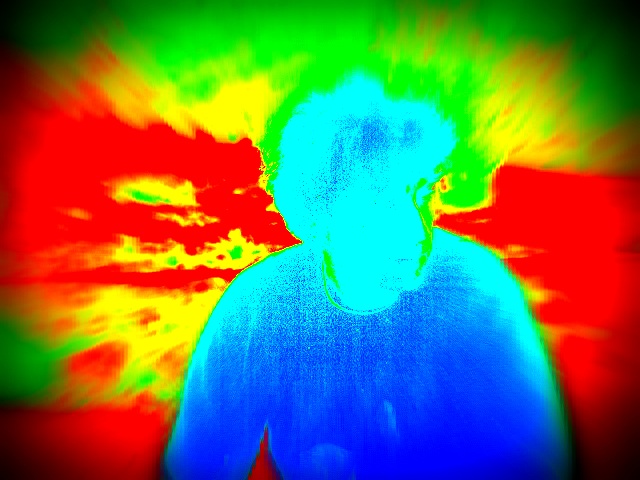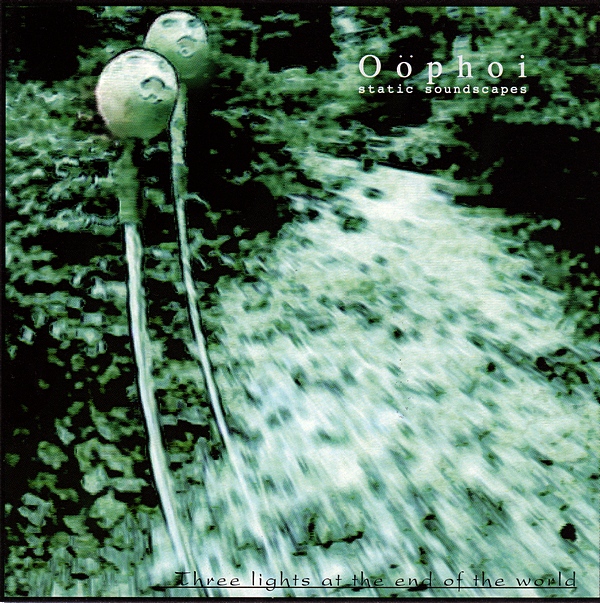
Exposé Online
What's old
Exposé print issues (1993-2011)
- 1 (October 1993)
- 2 (February 1994)
- 3 (May 1994)
- 4 (August 1994)
- 5 (October 1994)
- 6 (March 1995)
- 7 (July 1995)
- 8 (November 1995)
- 9 (March 1996)
- 10 (August 1996)
- 11 (February 1997)
- 12 (May 1997)
- 13 (October 1997)
- 14 (February 1998)
- 15 (July 1998)
- 16 (January 1999)
- 17 (April 1999)
- 18 (November 1999)
- 19 (May 2000)
- 20 (October 2000)
- 21 (March 2001)
- 22 (July 2001)
- 23 (December 2001)
- 24 (April 2002)
- 25 (September 2002)
- 26 (February 2003)
- 27 (August 2003)
- 28 (December 2003)
- 29 (April 2004)
- 30 (September 2004)
- 31 (March 2005)
- 32 (September 2005)
- 33 (May 2006)
- 34 (March 2007)
- 35 (January 2008)
- 36 (October 2008)
- 37 (July 2009)
- 38 (July 2010)
- 39 (Summer 2011)
Features
The Sounds of the Universe —
The Oöphoi Interview

In recent years several Italian musicians hit the big time in the electronic scene. Most of them use a pen name: Gianluigi Gasparetti, a.k.a. Oöphoi, is a case in point. This Rome-born artist is an all-around musician: a player and a composer, he was also the editor of Deep Listenings, a magazine devoted to a wide-ranging choice of non-commercial music. He has released some 20 CDs for many international labels, and he currently runs his own, Umbra, devoted to new Italian ambient artists.
by Alessandro Michelucci, Published 2005-09-01
 How did you become involved in music?
How did you become involved in music?
I started listening to music in my earliest years. It looked like something magical, coming from a faraway world. In the early 60s you could not choose and buy records, you could only listen to the radio; media coverage was poor. I grew up listening to The Beatles, The Rolling Stones, Bob Dylan and Leonard Cohen, the rock of the 70s, jazz, German progressive music, and minimalism: this was my turning point. I always devoted most of my spare time to music. Also, I have been a record collector until recently. I have focused on electronic music for over 25 years. In 1992 I founded a magazine, Deep Listenings, which was a pioneering publication indeed, being aimed at people looking for really new musics. As far as composition is concerned, I wrote my first works in 1995 by using a sampler and a synthesizer. I just wanted to try to "stand on the other side" and explore the world of sound.
Why did you choose the name Oöphoi?
Oöphoi is a term I liked, both as a symbol and as a sound. It is the mythological Egg of Creation, i.e. the very spring of the Universe. This symbol can be found in many ancient legends: the Cosmic Egg whose blast gave birth to the Universe, with a sound/vibration igniting material life. Many scientists argue that sound — OM — can still be listened to as the sound of the universe.
What do you mean to express with your music?
The mysteries of our lives, the sound behind everything, that sound we can no longer perceive, since we are distracted by this civilization of noise and unawareness, by self-destructing speed, by inner nothingness. I make music to retrieve a kind of silence we lost, to retrieve my inner center. In ancient civilizations music was linked to rituals and sacred events, it was a way to attain altered states of conscience or to get in touch with parallel realities. As time went by this got lost: music was depleted of her ritual power. Some kinds of today’s ambient music is going back to the roots, to the core of sound, and is tightly linked to a ritual dimension.
 Do you collaborate with other Italian or foreign musicians?
Do you collaborate with other Italian or foreign musicians?
You know, my field of action is ambient music, so I am in touch with like-minded musicians. In other words, composers which are not part of the music business. My magazine has the same goal. Ambient music is a little community of people sharing the same ideals. My first album, Three Lights at the End of the World, composed in 1995, has been released in 1996 by Italian ambient artist Alio Die’s own label, Hic Sunt Leones. In 2002 I founded the Nebula ensemble with Mauro Malgrande, Klaus Wiese, Lorenzo Pierobon, and Enrico Cosimi (a.k.a. Tau Ceti). It’s an open ensemble: more musicians are always welcome. Our first CD, Genesis, is a symbolic representation of the creation of the universe based on ancient Tibetan and Mayan religions. The work is a suite divided in several parts, from the Big Bang to the birth of man. In 2003 we recorded our second CD, The Path of White Clouds, inspired by a book by Lama Anagarika Govinda: the music is a symbolic expression of a spiritual search, from Consciousness to Illumination. Two new members had joined the group in between: German ambient artist Mathias Grassow on synths and Flemish Geert Verbeke, playing Himalayan bowls. I forged the sound in my studio, whilst Alessandra [Clini, Oöphoi’s wife] takes inspiration for her artwork directly from the music. Every Nebula musician contributes freely to the music but none knows the final result, which is entrusted by me. Another musician I am linked to is Russian Eduard Artemiev. Bardo was released in 2002 for his label, Electroshock, which is trying to promote electronic music in Russia.
 Can you tell us anything concerning your projects?
Can you tell us anything concerning your projects?
Well, I have just released three CDs of archival works for a series called Frammenti di Tempo (Fragments of Time). Also, two works of mine may be issued in the United States and in the Czech Republic. Another one is the outcome of a collaboration with Australian singer Louisa John-Krol, which should be issued by a French label, Prikosnovenie. Lastly, next fall I’ll be in the Netherlands for a concert.
Can you tell me anything about your magazine, Deep Listenings?
Deep Listenings is a real alternative magazine, dealing with non-commercial music defying labels. Or I’d better say it was, because it recently stopped. It had much in common with Exposé, I should say. My journal aimed at highlighting real musicians that are forgotten by the mainstream. Actually, I wanted to offer something totally different from the music you can find on radio and TV. It was really ahead of his time – maybe even too much for the times we are living.
Filed under: Interviews, Issue 32
Related artist(s): Edward Artemiev, Oöphoi (Gianluigi Gasparetti), Tau Ceti (Enrico Cosimi)
What's new
These are the most recent changes made to artists, releases, and articles.
- Review: Dirk Serries - Infinite and Unbound & Zonal Disturbances III
Published 2026-01-19 - Review: Roz Vitalis - Dedication to BigNick
Published 2026-01-18 - Review: Olly Chalk - In Those Remote Stars
Published 2026-01-17 - Review: Jeff Pearce - Infinite Ambient: Winter Landscapes
Published 2026-01-16 - Release: Nektar - Mission to Mars
Updated 2026-01-15 11:59:57 - Release: Mordecai Smyth - Gather the Scattered Mind
Updated 2026-01-15 11:52:38 - Review: Trio of Bloom - Trio of Bloom
Published 2026-01-15 - Review: Barry Cleveland & Robert Rich - Elliptical Passage
Published 2026-01-14 - Release: Orchestra of the Upper Atmosphere - θ2
Updated 2026-01-13 23:09:38 - Release: Orchestra of the Upper Atmosphere - θ3
Updated 2026-01-13 23:07:05 - Release: Orchestra of the Upper Atmosphere - θ6
Updated 2026-01-13 22:55:18 - Release: Orchestra of the Upper Atmosphere - θ5
Updated 2026-01-13 22:52:03 - Release: Orchestra of the Upper Atmosphere - θ4
Updated 2026-01-13 22:47:05 - Release: Barry Schrader - Ambient : Aether
Updated 2026-01-13 22:29:29 - Review: Trinary System - The Hard Machine
Published 2026-01-13 - Release: Camahueto - Reflejos
Updated 2026-01-12 23:44:45 - Artist: Camahueto
Updated 2026-01-12 23:41:18 - Release: Danza de la Ira - Septies Kairos
Updated 2026-01-12 23:03:00 - Artist: Danza de la Ira
Updated 2026-01-12 22:56:20
